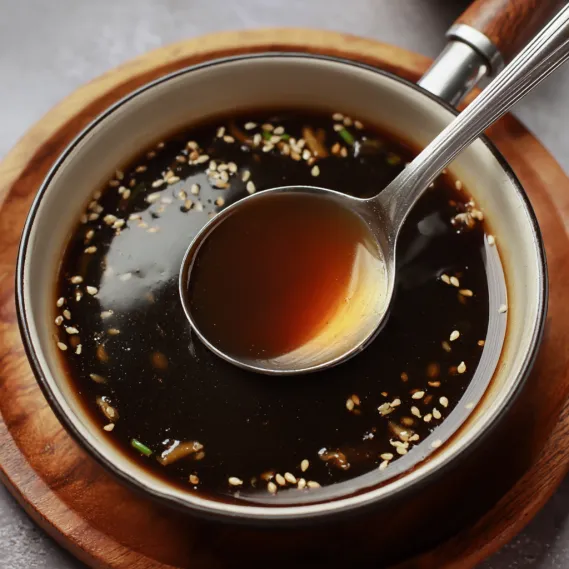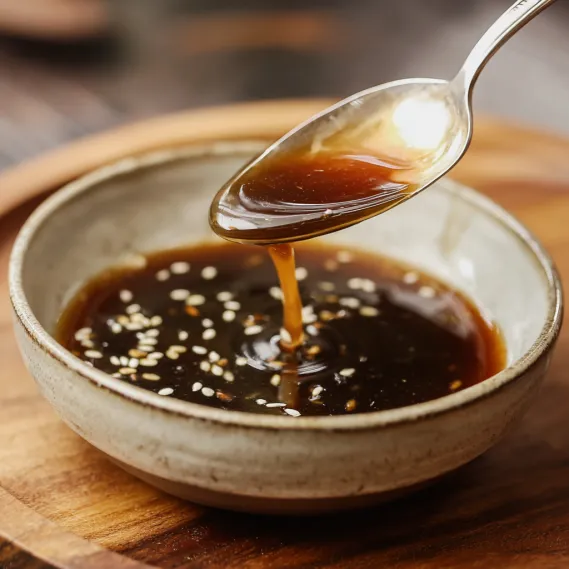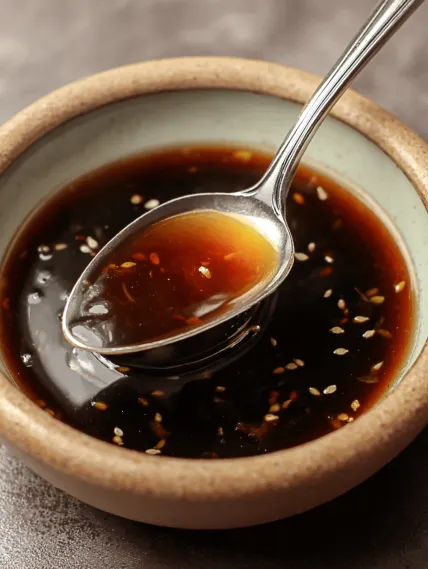 Pin
Pin
This all-purpose stir fry sauce transforms ordinary ingredients into restaurant-quality dishes with minimal effort. I've been using this recipe for years as my secret weapon for quick weeknight dinners when creativity runs low but expectations remain high.
I originally developed this sauce after countless disappointing takeout experiences during a busy work period. Now my family actually prefers my homemade stir fries to restaurant versions because of this balanced sauce.
Ingredients
- Soy sauce: Provides the umami foundation; choose low sodium if you prefer controlling salt levels
- Chicken broth: Adds depth without heaviness; vegetable broth works wonderfully for vegetarians
- Shaoxing wine or mirin: Brings subtle sweetness and complexity that distinguishes restaurant-quality dishes
- Sesame oil: Introduces nutty aromatic notes; a little goes a long way
- Sugar: Balances the saltiness; brown sugar can substitute for deeper flavor
- White pepper: Offers clean heat without visual speckles; black pepper works in a pinch
- Neutral cooking oil: Allows other flavors to shine; avoid olive oil which competes with Asian flavors
- Fresh minced garlic: Creates aromatic base; never substitute powder for this recipe
- Fresh minced ginger: Pairs perfectly with garlic providing bright zingy notes
- Cornstarch: Creates that signature glossy thickness without clouding flavors
How To Make All-Purpose Stir Fry Sauce
- Create the Flavor Base:
- Combine soy sauce, chicken broth, Shaoxing wine, sugar, sesame oil, and white pepper in a mixing bowl. Whisk thoroughly until sugar completely dissolves, about 1 minute. The liquid should look uniform without any sugar granules at the bottom.
- Prepare the Thickener:
- Mix cornstarch and water in a small bowl, stirring vigorously with a fork until you have a milky smooth liquid. This step is crucial for avoiding lumps in your finished sauce. The mixture should have the consistency of heavy cream.
- Bloom the Aromatics:
- Heat your neutral oil in a pan until it shimmers but doesn't smoke. Add minced garlic and ginger simultaneously, stirring constantly to prevent burning. Cook just until fragrant, about 15 seconds; the aromatics should soften slightly but not brown.
- Simmer the Base:
- Pour your soy sauce mixture into the pan with the aromatic oil, allowing it to come to a gentle boil. Reduce heat and simmer for exactly one minute, which helps the flavors meld without reducing too much.
- Thicken to Perfection:
- While stirring continuously, pour the cornstarch slurry in a thin stream into the simmering liquid. Continue stirring as the sauce thickens, about 30 seconds, until it coats the back of a spoon and appears glossy and translucent.

The Shaoxing wine is truly the unsung hero of this recipe. After visiting Shanghai several years ago, I learned that proper Chinese cooking rarely skips this ingredient. My father-in-law, who rarely compliments my cooking, specifically noted the authentic flavor in my stir fries after I started incorporating it.
Storage Guidelines
This sauce keeps remarkably well in the refrigerator. Pour cooled sauce into a clean glass jar with a tight-fitting lid and refrigerate for up to three weeks. The flavors actually continue to develop over the first few days, making it perfect for meal prep. If you notice any separation, simply shake well before using.
Customization Options
The beauty of this master sauce lies in its adaptability. Create a spicy version by adding 1 tablespoon of chili garlic sauce or sambal oelek. For a sweeter profile, increase sugar to 20g or add 2 tablespoons of hoisin sauce. Create a citrus variation with 1 tablespoon of orange zest and 2 tablespoons of fresh orange juice added during the simmering stage.
Cooking Applications
While designed for stir frying, this versatile sauce works wonderfully as a marinade for proteins when thinned with equal parts water. Let chicken, tofu, or beef marinate for at least 30 minutes before cooking. It also makes an excellent glaze for roasted vegetables; simply brush onto Brussels sprouts, broccoli, or carrots during the last 5 minutes of roasting.

Historical Context
Stir fry sauces vary dramatically across East Asian cuisines, with regional variations reflecting local ingredients and cultural preferences. This version leans toward Cantonese cooking styles, which typically favor balanced flavors rather than extremes of spice or sweetness. Traditional recipes often include ingredients like yellow bean paste or oyster sauce, which I've simplified here for accessibility without sacrificing authentic character.
Recipe FAQs
- → Can I use a vegetarian substitute for chicken broth?
Yes, vegetable broth or water with added seasonings can be used as a substitute for chicken broth.
- → How do I store leftover sauce?
Store the cooled sauce in an airtight container in the refrigerator for up to 5 days. Reheat gently before using.
- → Can this sauce be frozen?
Yes, this sauce can be frozen in portion-sized containers for up to 3 months. Thaw in the refrigerator and reheat before use.
- → What can I substitute for Shaoxing wine or mirin?
If you don't have Shaoxing wine or mirin, you can use dry sherry or a mixture of water and a splash of rice vinegar with sugar.
- → Can I make this sauce gluten-free?
Yes, use tamari or gluten-free soy sauce as a substitute for regular soy sauce to make the sauce gluten-free.
